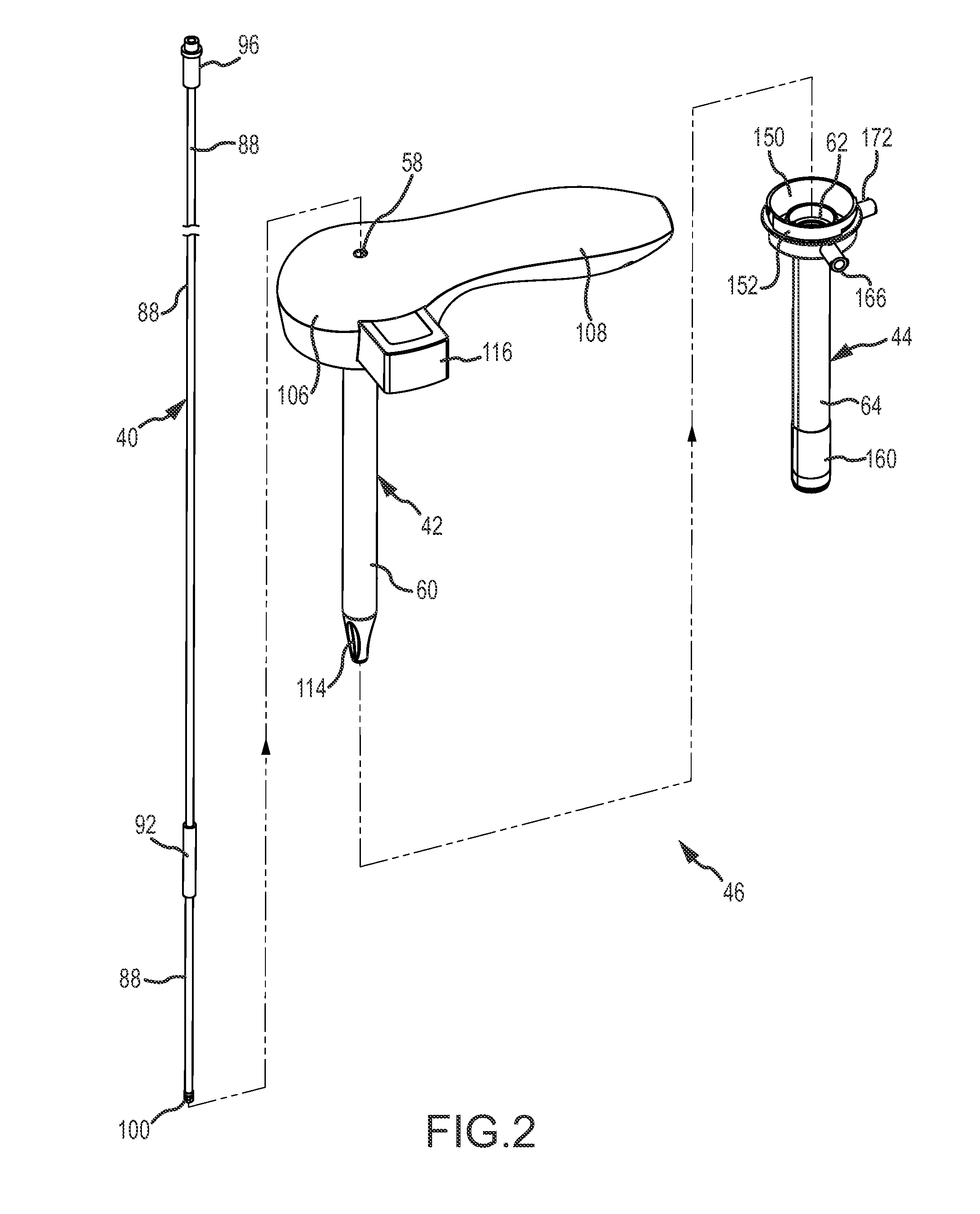Method and Apparatus for Placing a Cannula in a Bladder
a cannula and bladder technology, applied in the field of bladder cannula placement methods and apparatuses, can solve the problems of engendering significant risks, difficult interior fascia layer, and requiring a considerable amount of pushing force for blunt force dilation, so as to avoid the risk of losing alignment, reduce the risk of enlargement of the small surgical pathway, and reduce the effect of enlargemen
- Summary
- Abstract
- Description
- Claims
- Application Information
AI Technical Summary
Benefits of technology
Problems solved by technology
Method used
Image
Examples
Embodiment Construction
[0046]A placement guide 40, an obturator 42, and a cannula 44, shown generally in FIGS. 1-3, are used together as apparatus 46 to place the cannula 44 in an enlarged opening 48 (FIGS. 19-22) extending from a bladder 50 through a bladder wall 52 and an abdominal wall 54 of a living being, shown generally in FIGS. 10-22. Once placed in the enlarged opening 48, the cannula 44 provides access for inserting medical instruments 56 into the bladder 50 to perform a minimally invasive surgical procedure (FIG. 23).
[0047]To use the apparatus 46, the placement guide 40 is inserted within a center passage 58 of the obturator 42. A shaft of 60 of the obturator 42 is inserted within a central channel 62 of an exterior conduit 64 of the cannula 44. FIG. 1 shows the assembled relationship of the placement guide 40, the obturator 42 and the cannula 44, and FIG. 2 shows their interconnected relationship.
[0048]The enlarged opening 48 is formed from an initial small diameter surgical pathway 72 created ...
PUM
 Login to View More
Login to View More Abstract
Description
Claims
Application Information
 Login to View More
Login to View More - R&D
- Intellectual Property
- Life Sciences
- Materials
- Tech Scout
- Unparalleled Data Quality
- Higher Quality Content
- 60% Fewer Hallucinations
Browse by: Latest US Patents, China's latest patents, Technical Efficacy Thesaurus, Application Domain, Technology Topic, Popular Technical Reports.
© 2025 PatSnap. All rights reserved.Legal|Privacy policy|Modern Slavery Act Transparency Statement|Sitemap|About US| Contact US: help@patsnap.com



